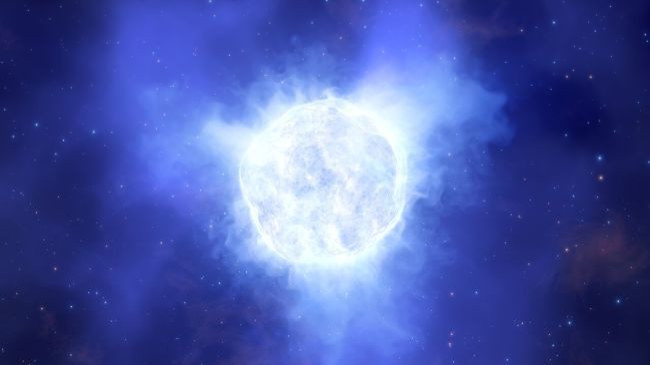Unstable Massive Star Vanishes; Did It Become A Black Hole?

KEY POINTS
- A star brighter than the Sun suddenly vanished
- Scientists believe the star turned into a black hole
- The star's brightness might have decreased
The sudden disappearance of a star millions of times brighter than the Sun has baffled scientists. It is possible that the stellar object suddenly died and turned into a black hole, scientists say.
The bright star was visible from 2001 to 2011. Through Earth-based telescopes such as the European Southern Observatory’s Very Large Telescope, scientists were able to observe and pinpoint the location of the star.
According to the scientists, they located the star about 75 million light-years away from Earth in a region known as the Kinman Dwarf galaxy. Although the star was too far to be spotted on its own, the scientists were able to detect it through the light signature or spectrum of the galaxy.
Based on their observations, the scientists estimated that the Kinman star was about 2.5 million times brighter than the Sun. Usually, stellar objects like the Kinman star are unstable due to their massive size.
Unfortunately, when the scientists tried to observe the star again in 2019, they were not able to find it. The star’s sudden disappearance baffled scientists because the Kinman Dwarf galaxy did not show signs of a supernova event. This led the scientists to believe that instead of producing a powerful explosion, the star may have completely collapsed and immediately turned into a black hole.
“We were surprised to find out that the star had disappeared,” lead researcher Andrew Allan said in a statement. “This would be the first direct detection of such a monster star ending its life in this manner.”
Since black holes are known to devour everything, including light, this aspect could explain why the scientists can’t find traces of the star or the resulting black hole within the Kinman Dwarf galaxy.
However, scientists noted that before stars turn into a black hole, they would trigger a supernova explosion first. Due to the lack of supernova remnants within the galaxy, the scientists came up with another possible explanation regarding the star’s sudden disappearance.
According to the scientists, it is possible that the star became significantly less luminous as it lost its mass. In this scenario, the star is most likely hiding behind dust clouds within the galaxy.
The scientists presented their findings on the star in a new study published in the Monthly Notices of the Royal Astronomical Society.
© Copyright IBTimes 2025. All rights reserved.





















